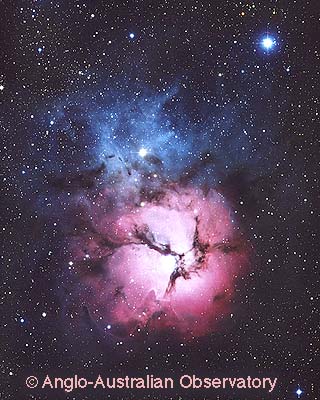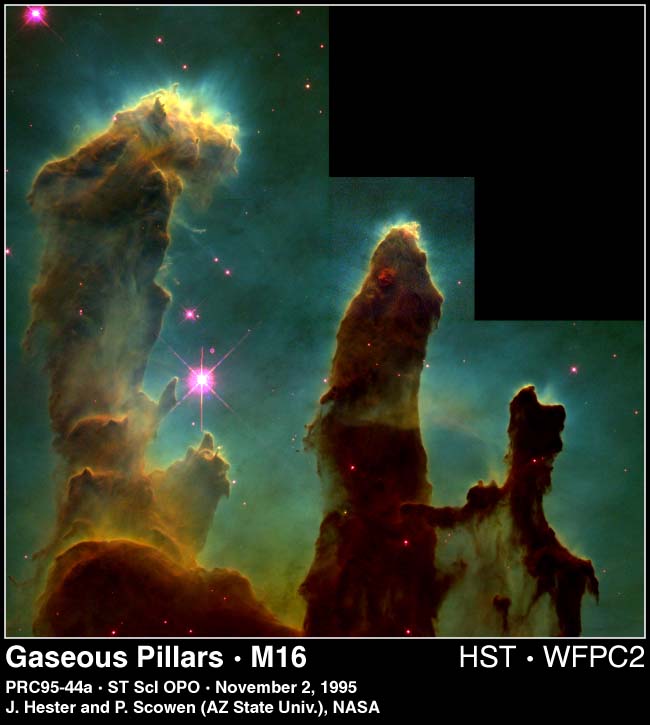 Ionized
hydrogen ("HII regions")
Ionized
hydrogen ("HII regions")
Interstellar space is not empty -- there is lots of gas and dust in the galaxy.
The chemical composition of the gas is mostly hydrogen (~70%), a little bit of metals (~ few %) and the rest helium. What does this sound like?
Depending on the physical conditions around the gas, it can be either
 Ionized
hydrogen ("HII regions")
Ionized
hydrogen ("HII regions")
Near hot stars, the intense UV light can ionize the hydrogen atoms. When the electrons and protons recombine, they generally recombine to upper energy levels (large n), and then cascade down, emitting Balmer lines. Then they can be reionized, and the cycle continues. So we see Balmer emission lines, as well as lines from other atoms (ie oxygen, sulfer, silicon, carbon...).These HII regions are associated with regions of active star formation. Why do we know there are young stars there?
Far away from stars, there is nothing to ionize the gas, or even excite the electrons to higher energy levels. The hydrogen is in the ground state (n=1), so there are no downward transitions to make optical emission lines. How then can we see this gas?Molecular gasAtomic physics: particles have angular momentum (spin, described by the quantum number m). Because they have charge, and are spinning, they act sort of like little magnets. The electron and proton want to be anti-aligned so that they have opposite spin -- this is their ground state. If they are aligned, they have slightly more energy; they can change their spin and release this energy difference as a photon.
The energy difference is small - about 6x10-6 eV. This corresponds to a wavelength of 21 cm -- radio waves!
From radio surveys of our galaxy we find lots of neutral hydrogen gas: about 1 solar mass of gas for every 10 solar masses of stars.
If the density of the gas is high, and the temperature is cold enough, hydrogen atoms can form molecular hydrogen (H2). Unfortunately, there is no emission from H2 in the optical or radio bands -- it is very hard to observe. How can we see it?Where we see lots of gas -- in particular molecular gas and ionized gas -- we see lots of stars forming...1. Look at other molecules (where you have one molecule, you'll probably have others). For example, CO emits radiation at a wavelength of 2.6mm -- microwaves!
2. Look for dust. Dust and molecules are often found together -- dense, dark clouds (called Bok globules) are regions of very dense molecular gas.
